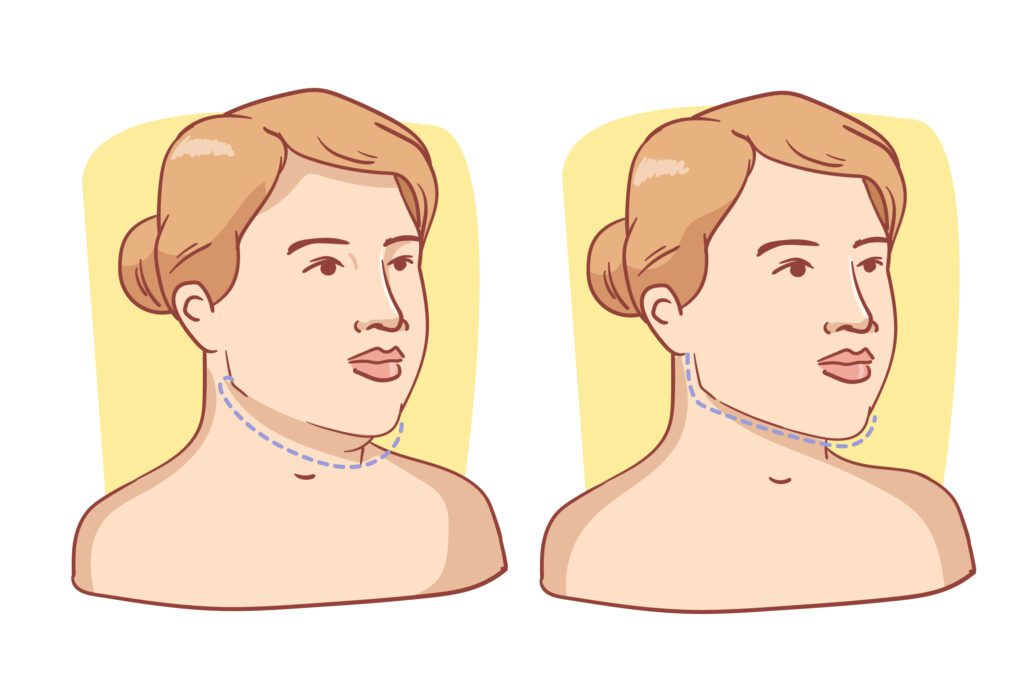In today’s digital age, it is common to spend hours staring at a screen, whether it’s for work or leisure. However, this may lead to eye strain, which can cause discomfort and affect your productivity. Luckily, there are several ways to alleviate eye strain quickly and easily. In this article, we’ll explore 14 effective ways to relieve eye strain fast, including adjusting your screen settings, taking breaks, practicing eye exercises and maintaining proper diet. By following these tips, you can reduce eye strain and improve your overall eye health.
What is Eye Strain?
Eye strain which is also known as asthenopia is a condition that occurs when the eyes become tired or overworked after prolonged use. This can occur due to various factors, such as reading, using a computer or mobile device for extended periods or driving for long distances.
Causes of Eye Strain.
There are several factors that can contribute to the development of eye strain, including:
1. Prolonged screen time.
In today’s digital age, individuals spend extensive hours staring at screens, whether it be computers, smartphones or tablets. The constant exposure to the blue light emitted from these devices can cause eye strain. Additionally, focusing on a screen for long periods without taking breaks can also lead to eye fatigue.
2. Poor Lighting Conditions.
Insufficient or excessive lighting can strain the eyes. Working in dimly lit areas forces the eyes to work harder to maintain focus, while harsh, bright lights can cause glare and discomfort, leading to eye strain.
3. Incorrect Posture.
Maintaining an improper posture while working or reading can contribute to eye strain. Slouching or sitting too close to the screen can cause the eyes to strain as they struggle to focus properly.
4. Uncorrected Vision Problems.
Individuals with uncorrected vision issues, such as nearsightedness, farsightedness or astigmatism may experience eye strain. When the eyes continuously strain to compensate for these refractive errors, it can lead to discomfort and fatigue.
5. Dry Eyes.
Insufficient lubrication of the eyes can result in dryness, itchiness and redness, leading to eye strain. Factors like dry indoor environments, excessive screen time or inadequate blinking can contribute to dry eye syndrome.
6. Lack of Breaks.
Failing to take regular breaks during prolonged visual tasks can contribute to eye strain. The eyes require periodic rest to prevent constant strain and fatigue.
7. Environmental Factors.
Environmental factors such as dust, smoke, allergens or air pollution can cause eye irritation and strain. These irritants may trigger allergic reactions or inflammation, leading to discomfort and strain.
8. Stress and Fatigue.
High levels of stress and fatigue can manifest physically, including in the eyes. When individuals are stressed or fatigued, their eye muscles can tense up, leading to eye strain and discomfort.
9. Improper Use of Contact Lenses.
Wearing contact lenses for an extended period or failing to clean them properly can cause eye strain. Contact lenses can reduce the amount of oxygen reaching the eyes, leading to dryness and irritation.
10. Eye Related Conditions.
Certain eye conditions, such as blepharitis (inflammation of the eyelids), conjunctivitis (pink eye) or eye muscle imbalance can contribute to eye strain. These conditions can cause discomfort, blurred vision and increased eye fatigue.
Symptoms of Eye Strain.
Eye strain refers to a condition characterized by a variety of symptoms that occur when the eyes are subjected to prolonged or intense use, typically associated with activities such as reading, using digital devices or driving for extended periods. These symptoms can vary in severity and may differ from person to person, but they generally include:
1. Eye Discomfort.
One of the most common symptoms of eye strain is a feeling of discomfort or soreness in the eyes. This discomfort may range from mild to severe and may be accompanied by a sensation of pressure or heaviness in the eye area.
2. Headaches.
Eye strain often leads to headaches, particularly those that occur behind the eyes or in the temples. These headaches can be dull and achy or sharp and throbbing and they may worsen with continued visual tasks.
3. Blurred Vision.
When experiencing eye strain, individuals may notice that their vision becomes blurry or hazy, making it challenging to focus on objects or text. This blurred vision can be intermittent or persistent depending on the severity of the eye strain.
4. Dryness and Irritation.
Eye strain can cause the eyes to become dry, itchy or irritated. This occurs due to reduced blinking when engaged in prolonged visual tasks, leading to inadequate tear production and insufficient lubrication of the eyes.
5. Sensitivity to Light.
People with eye strain may become more sensitive to bright lights or harsh lighting conditions. This sensitivity known as photophobia which may cause discomfort or even pain when exposed to excessive or intense light.
6. Eye Redness.
The strain placed on the eyes can cause blood vessels in the conjunctiva where the clear tissue covering the white part of the eyes to become dilated and more prominent. This dilation results in redness or bloodshot appearance of the eyes.
7. Difficulty Concentrating.
As eye strain progresses individuals may find it increasingly challenging to maintain focus and concentration on tasks. This can lead to reduced productivity and performance, particularly in activities requiring visual attention.
8. Neck and Shoulder Pain.
Prolonged eye strain can also trigger muscle tension and pain in the neck and shoulders. This pain occurs due to the interconnected network of muscles and nerves in the head and upper body, which can become strained and fatigued during prolonged visual tasks.
15 Ways to Relieve Eye Strain Fast.
1. Take Regular Breaks.
Look away from your screen or book every 20 minutes and focus on an object in the distance for at least 20 seconds to give your eyes a rest.
2. Blink Frequently.
Blinking helps to moisturize your eyes and prevent dryness, which can contribute to eye strain. Make a conscious effort to blink more often, especially when using digital devices.
3. Adjust Your screen Brightness.
Reduce the brightness of your computer or smartphone screen to a comfortable level that doesn’t strain your eyes. Avoid using devices in bright sunlight or in complete darkness.
4. Use Proper Lighting.
Ensure that your workspace is well lit, preferably with natural light. Avoid harsh or dim lighting as it can strain your eyes. Use a desk lamp with a soft, diffused light if needed.
5. Practice the 20-20-20 Rule.
Every 20 minutes, look at an object at least 20 feet away for 20 seconds. This exercise helps to reduce eye fatigue caused by prolonged near-focus activities.
6. Adjust your Screen Position.
Position your computer screen slightly below eye level and about 20 to 28 inches away from your eyes. This will help to reduce strain on your neck and eyes.
7. Use Artificial Tears.
If your eyes feel dry, use lubricating eye drops or artificial tears to moisturize them. Make sure to choose drops that are safe for your eyes and consult an eye specialist if needed.
8. Massage Your Temples.
Gently massage your temples in a circular motion using your fingertips. This can help to relieve tension and promote blood flow to your eyes.
9. Apply a Warm Compress.
Place a warm, damp cloth over your closed eyes for a few minutes. This can help to relax your eye muscles and alleviate strain.
10. Adjust Your Font Size.
Increase the font size on your electronic devices to make it easier to read and reduce eye strain. Avoid squinting or straining to read small text.
11. Maintain Proper Posture.
Sit up straight and ensure that your chair, desk and computer are ergonomically aligned. This helps to prevent neck and back strain, which can indirectly affect your eyes.
12. Limit Screen Time.
Minimize your exposure to digital screens, especially before bedtime. Excessive screen time can lead to eye strain and disrupt your sleep patterns.
13. Stay Hydrated.
Drink plenty of water throughout the day to keep your body and eyes well hydrated. Dehydration can worsen eye strain symptoms.
14. Get Regular Eye Check Ups.
Schedule regular eye examinations with an optometrist to ensure that your eyes are healthy and to address any underlying issues that may contribute to eye strain.
Exercises To Relieve Eye Strain.
There are several exercises that can help to alleviate eye strain and promote eye health. It is important to note that these exercises should not replace professional eye care but rather serve as supplementary activities to incorporate into your daily routine. Here are some exercises to relieve eye strain:
1. Palming.
Start by rubbing your hands together vigorously until they feel warm. Close your eyes and place your palms gently over them, ensuring no pressure is applied.
Relax and breathe deeply while visualizing a soothing scene, such as a serene beach or a lush forest. Hold this position for a few minutes for allowing your eyes to rest and rejuvenate.
2. Blinking.
Many individuals tend to blink less frequently while using screens, leading to dry and strained eyes. To combat this, consciously blink your eyes every few seconds, making sure to fully close and open them. Blinking helps to moisturize the eyes, reduce dryness and relieve strain.
3. Focus Shifting.
Select an object in the distance such as a tree or a building and shift your focus from that object to something up close, like your finger held at arm’s length. Repeat this process multiple times, alternating between near and far objects. This exercise helps to relax eye muscles and enhance flexibility.
4. Eye Rolling.
Sit comfortably and slowly roll your eyes in a circular motion clockwise, then counter clockwise. Focus on the movement and ensure your head remains still. This exercise helps to release tension in the eye muscles, promoting better blood circulation and reducing strain.
5. Figure Eight Tracing.
Extend your arm in front of you and imagine a large figure-eight (∞) in front of you. Trace the shape with your eyes, following the imaginary outline smoothly and gradually. Repeat this exercise several times, allowing your eyes to track the figure eight pattern. This exercise helps to improve eye coordination and relieve eye strain.
6. Near and Far Focusing.
Hold a pen or pencil at arm’s length, focusing your gaze on the tip. Slowly bring the object closer to your eyes, maintaining focus as long as possible before it becomes blurry. Gradually move the object away again, repeating this process several times. Near and far focusing exercises help to strengthen eye muscles and enhance focus flexibility.
7. Eye Massages.
Gently massage your closed eyelids in a circular motion using your fingertips. Start from the inner corner of your eyes and move outward. This massage technique helps to stimulate blood flow, reduce tension and alleviate eye strain.
Footnotes. Remember to take regular breaks from visually intensive tasks, such as working on a computer or reading to give your eyes a rest. Additionally, maintaining good lighting conditions, adjusting screen brightness and practicing proper posture while using digital devices can also contribute to relieving eye strain. By incorporating these exercises and healthy habits into your routine you can help to alleviate eye strain and promote overall eye health.
Diet To Relieve Eye Strain.
A well balanced and nutrient rich diet can effectively alleviate eye strain, promoting optimal eye health and reducing discomfort. Incorporating specific foods into your daily meals can provide essential nutrients that support the eyes wellbeing and help to combat eye strain. Here are some dietary recommendations to consider:
1. Omega-3 Fatty Acids.

Foods rich in omega-3 fatty acids, such as fatty fish (salmon, mackerel and sardines), flaxseeds, chia seeds and walnuts are known to have anti inflammatory properties. Including these foods in your diet can help to reduce eye inflammation and alleviate eye strain.
2. Vitamin A.

Consuming foods with high vitamin A content can benefit eye health. Carrots, sweet potatoes, spinach, kale and red bell peppers are excellent sources of this essential vitamin. Vitamin A plays a crucial role in maintaining good vision and can aid in relieving eye strain symptoms.
3. Vitamin C.

Foods rich in vitamin C like citrus fruits (oranges, lemons and grapefruits), strawberries and bell peppers can help to strengthen the blood vessels in the eyes. This strengthened vascular system can improve blood flow and decrease eye strain.
4. Vitamin E.
Including vitamin E in your diet can help to protect your eyes from oxidative stress. Nuts (almonds, hazelnuts and peanuts), seeds (sunflower and pumpkin), and avocados are excellent sources of this vitamin. Vitamin E’s antioxidant properties can reduce eye strain caused by exposure to harmful environmental factors.
5. Antioxidant Rich Foods.
Berries such as blueberries, blackberries and raspberries contain antioxidants that can combat free radicals and protect the eyes from oxidative damage. Incorporating these fruits into your diet can contribute to reducing eye strain symptoms.
6. Green Leafy Vegetables.
Spinach, kale and collard greens are packed with nutrients like lutein and zeaxanthin which are known to promote eye health. These nutrients can help to filter harmful blue light, reduce eye fatigue and alleviate eye strain.
7. Hydration.
Staying properly hydrated is essential for overall eye health. Drinking an adequate amount of water throughout the day can prevent dry eyes which is a common symptom of eye strain. Additionally, staying hydrated can improve tear production and lubrication, reducing eye discomfort.
| Read Now: 17 Super Food for Macular Degeneration |
Bottom Line.
Eye strain is a common problem that can occur due to various reasons. It can cause discomfort, irritation and affect your vision. However, there are several effective ways to relieve eye strain quickly. From taking breaks and adjusting lighting to practicing eye exercises and using eye drops, these simple tips can help to alleviate your symptoms and improve your eye health. By incorporating these strategies into your daily routine, you can reduce the risk of eye strain and enjoy clear, comfortable vision. Remember to consult with your eye doctor if you experience persistent eye strain or other vision problems.
How we reviewed this article:
Our team of experts is always monitoring the health and wellness field, ensuring that our articles are updated promptly as new information emerges. See Our Editorial Process
Dec 7, 2025
Written By: Mila Apostolovic
Reviewed By: David Rosales
Written By: Mila Apostolovic
Reviewed By: David Rosales

 Workout
Workout
 Meditation
Meditation





 Contact Us
Contact Us














